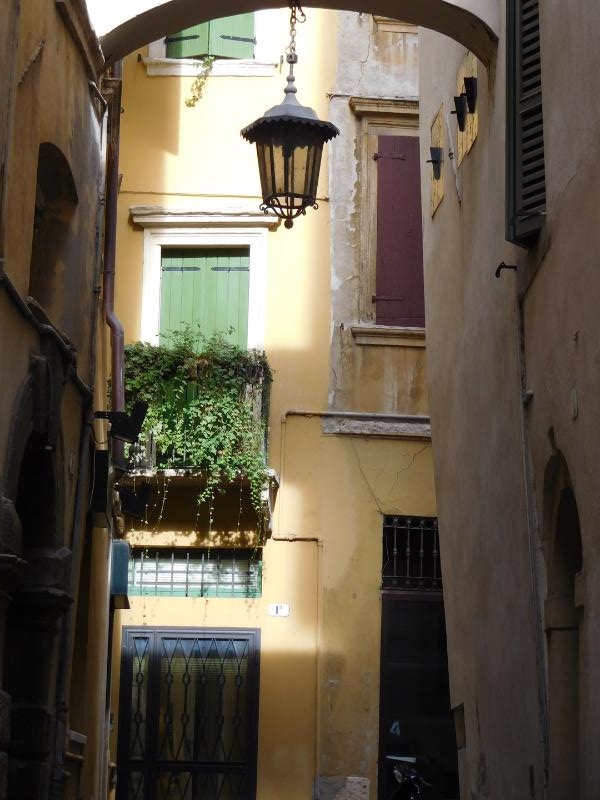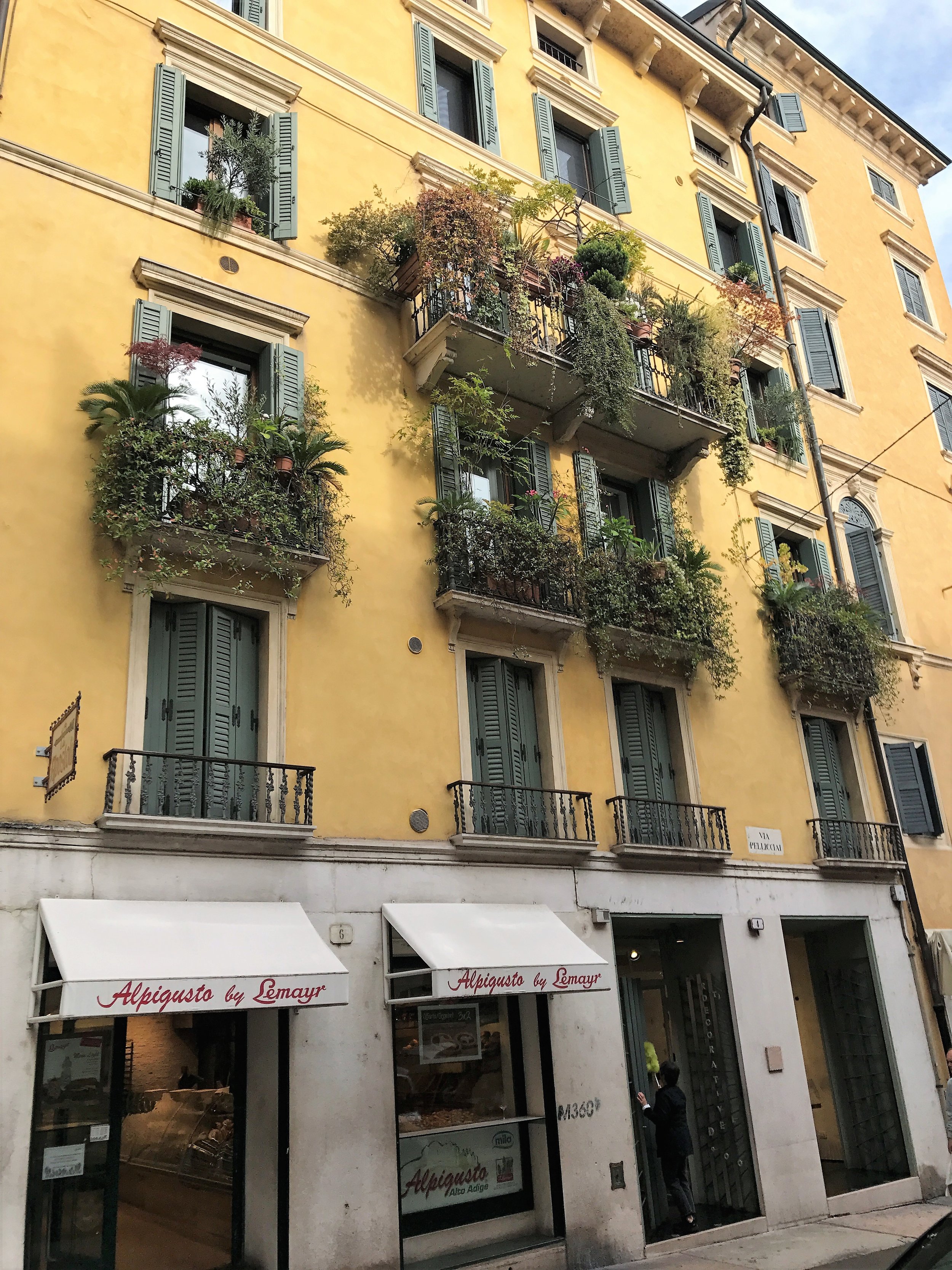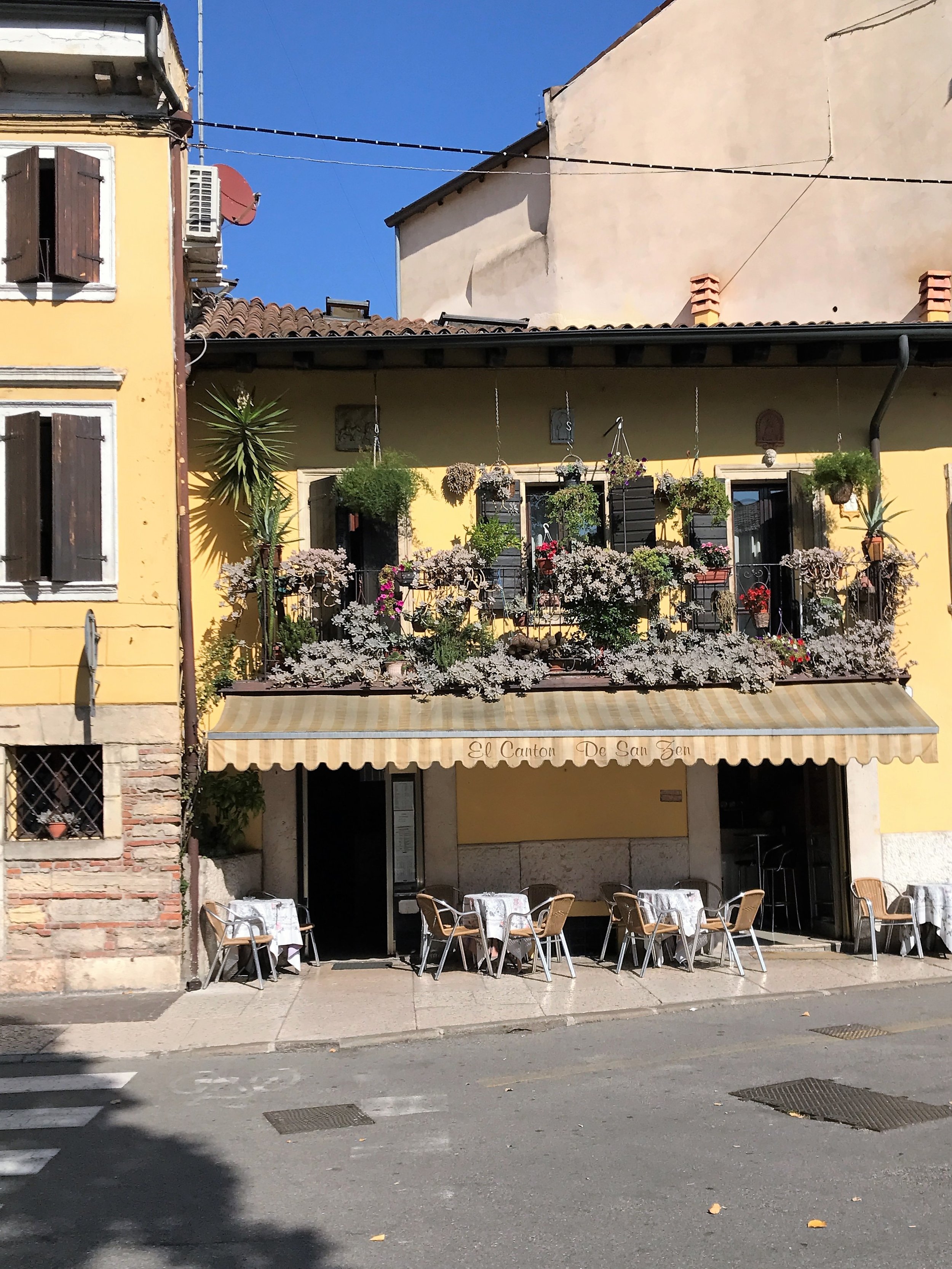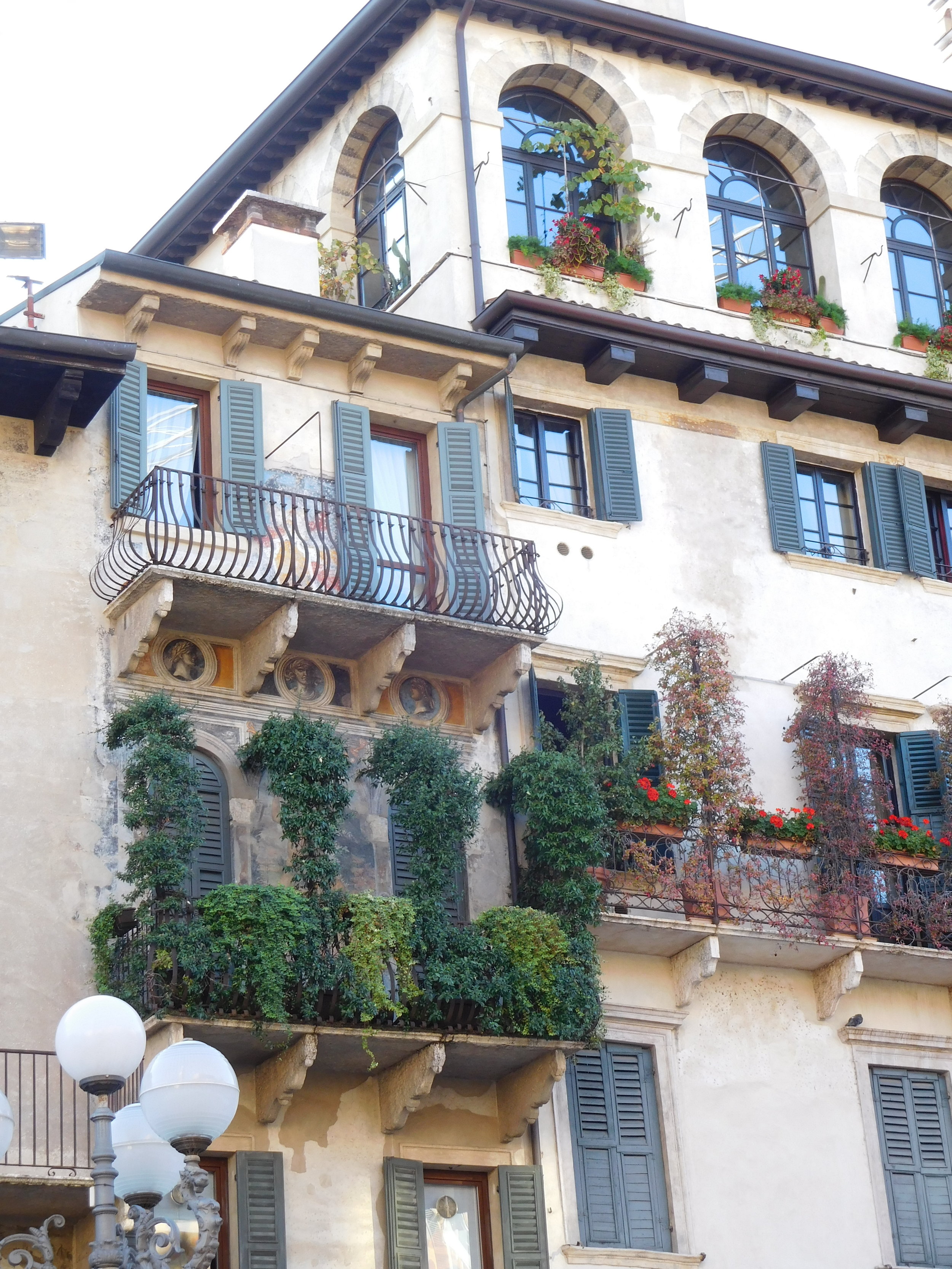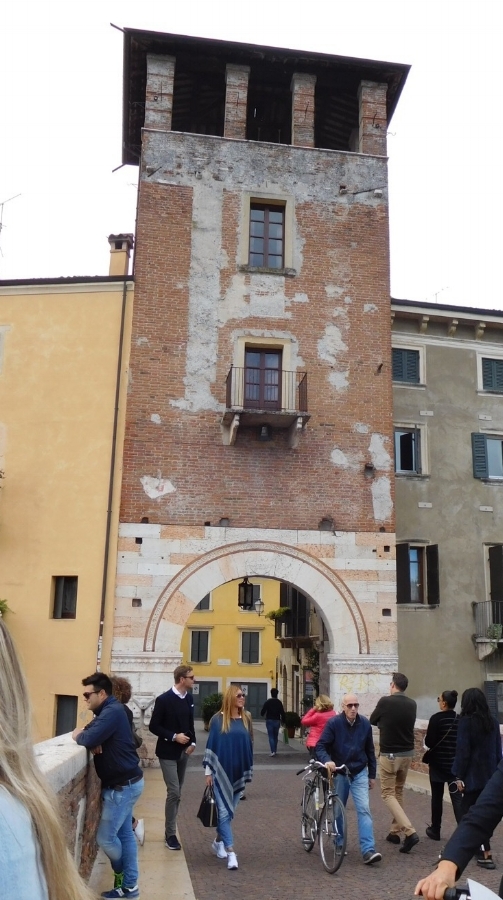Balcony Views in Verona
Juliet's legendary balcony is far from the only one in fair Verona. The city, perhaps known best for being the setting of Shakespeare's "Romeo and Juliet," has balconies around every corner, many dripping with greenery or filled with colorful flowers.
While Juliet's balcony is small (and not even really a Juliet balcony - more on that in a moment), some of Verona's apartment extensions (which is how I view balconies) are rather large. Most, however, are narrow, which is typical in Italy. Below is a gallery of just a few of the lovely balconies seen during a recent visit to Verona. I love how plant life often is the decorative element on the balconies.
A Juliet balcony (but not THE Juliet balcony)
The word balcony appropriately comes from the Italian word balcone. Those that extend from a dwelling are traditionally called Maltese balconies while those that do not project out from a building are called Juliet balconies (picture just a metal railing across a doorway on an upper-level floor of a building and you'll get the image of these balconies).
You can see from the photo below that Verona's popular landmark, Juliet's balcony, is clearly not a true Juliet balcony. It's charming nonetheless and overlooks a small courtyard.
Juliet's balcony (which is actually a Maltese-type balcony) in Verona.
While I would find any balcony in Verona appealing, the most coveted would be one overlooking Piazza delle Erbe, which was Verona's forum during the time of the Roman Empire. This large, historic and lively piazza is beautiful. Fading frescoes and flower-filled balconies adorn the walls of the Mazzanti Houses, which face the piazza on its northeastern side. Across the piazza to the south are more apartments, many with pretty balconies of their own.
The Mazzanti Houses are covered with old (15th or 16th century) frescoes and lined with charming flower filled-balconies.
Imagine being able to gaze at this beautiful piazza everyday from your apartment balcony. Some lucky people get to do just that.
-post by JG
Children in Verona have an enviable view from a small balcony that overlooks Piazza delle Erbe.

